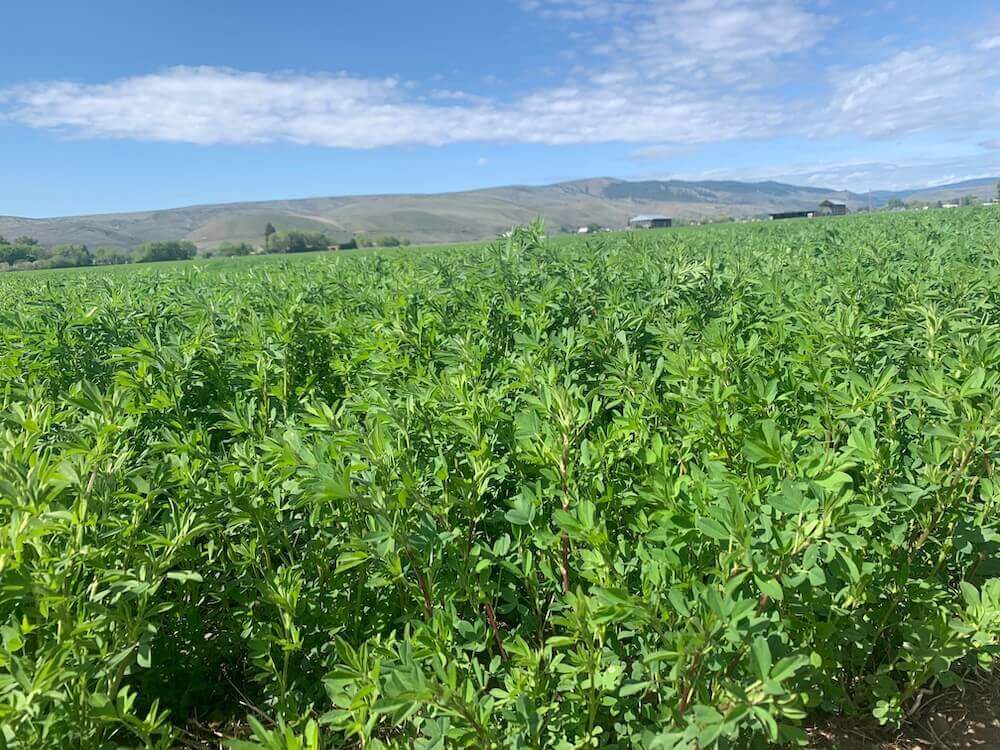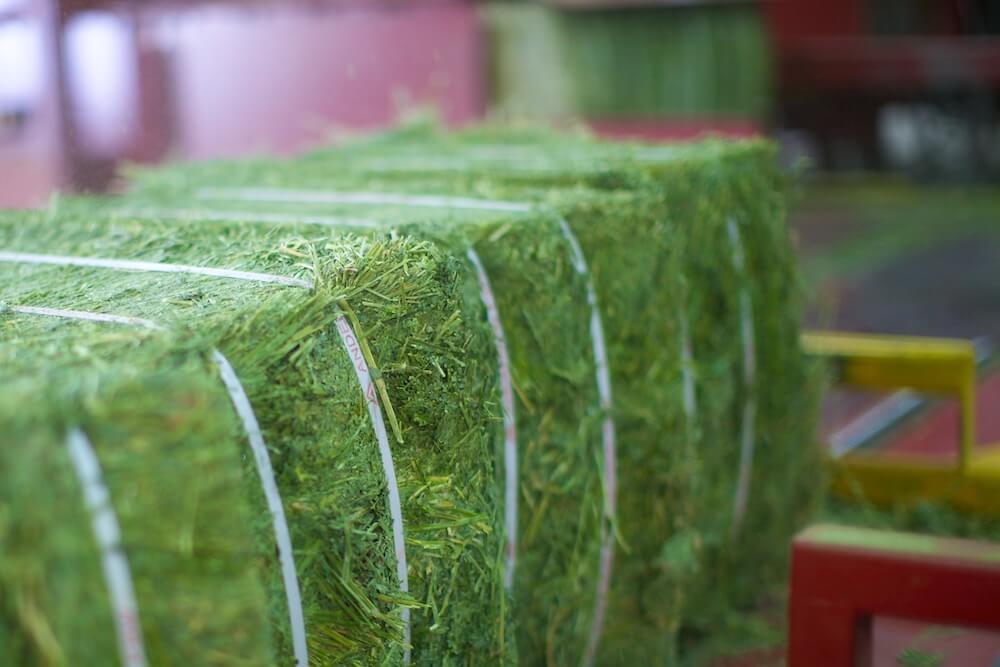ABOUT ALFALFA HAY
Alfalfa is a legume hay in the pea family and is sometimes called “lucerne.” When properly cured, alfalfa is the best of the legume hays from a nutrient standpoint. Alfalfa is used for horses, dairy cows, beef cattle, sheep, chickens, turkeys and other farm animals, and has the most feed value of all the perennial pasture forages.

Nutritional Benefits
With its high nutritional quality, Alfalfa hay is one of the best and most popular animal feed varieties.
High Vitamin Content
High Protein and Calcium
High Mineral Count
Alfalfa Hay’s Benefits for Horses
Alfalfa Hay’s Benefits for Horses
Alfalfa Hay’s Benefits for Cattle
Alfalfa Hay’s Benefits for Cows
EXPORT HAY

Order Alfalfa Hay
If you would like to contact Anderson Hay about purchasing Alfalfa for your horse or livestock, please get in touch using our form below.
Follow Along With Anderson
Keep up to date on our hay and straw products’ timelines with our month-to-month harvesting schedule!
FAQs
Alfalfa Hay and Timothy Hay are two distinct varieties of forage that cater to different nutritional needs of livestock and pets. Alfalfa Hay, a legume, is characterized by its rich, deep-green color, softer texture, and high protein, calcium, and energy content, making it an ideal choice for young, growing animals and lactating or pregnant animals that require extra nutrients.
On the other hand, Timothy Hay, a grass hay, boasts a paler green hue, coarser texture, and a more balanced fiber-to-protein ratio, promoting healthy digestion and reducing the risk of obesity. This makes Timothy Hay an excellent option for adult animals or those with lower nutritional demands, such as horses with a low to moderate work regimen, or small herbivores like rabbits and guinea pigs.
Alfalfa has a high nutritional quality, containing vitamins A, D, E, K, U, C, B1, B2, B6, B12, Niacin, Pantothenic acid, Inositol, Biotin, and Folic acid. Alfalfa also contains the minerals Phosphorus, Calcium, Potassium, Sodium, Chlorine, Sulfur, Magnesium, Copper, Manganese, Iron, Cobalt, Boron, Molybdenum and trace elements such as Nickel, Lead, Strontium and Palladium.
Horses require trace minerals to combat skeletal distress and help in the bone development of young growing horses. When Alfalfa is fed to horses along with a diet of Timothy hay, they will receive many of the nutrients required and all of the fiber needed to build the base of a strong nutritional program.
Alfalfa hay is harvested starting in early spring in southern states such as Arizona, and usually begins in March in northern Pacific Northwest states. Fields are cut several times each season, up to eight times in warmer growing regions. Nutrition is at its highest when Alfalfa is cut pre-bloom. This indicates that nutrition is maintained in the leaf and stem of the plant, instead of moving into the flower when the head is fully developed. Nutrition plays a large role in the quality and grading of Alfalfa, in addition to texture and color qualities that vary according to specific livestock requirements.
A horse needs a fairly small amount of protein per day. Roughly 3/4 to 1 pound of digestible protein (DP) will meet most horses’ daily requirement. This need can be met by supplying Alfalfa as half of a horse’s roughage. Feeding horses Alfalfa reduces or even eliminates the need for supplements which often have a laxative effect. Our commitment to supplying high quality Alfalfa year round gives horses a consistent and safe supply of protein.
Alfalfa is most beneficial for horses with high energy needs due to their moderate to high level of exertion. Alfalfa may provide too much energy, protein and nutrients for horses that are only occasionally exercised. Those horses that spend less than five hours a week performing low to moderate intensity activities, such as showing or recreational riding, do not require the high levels of nutrients that high quality Alfalfa supplies. A feed program for recreational horses should limit Alfalfa and include forage with high chew time, such as Timothy hay to combat idleness.